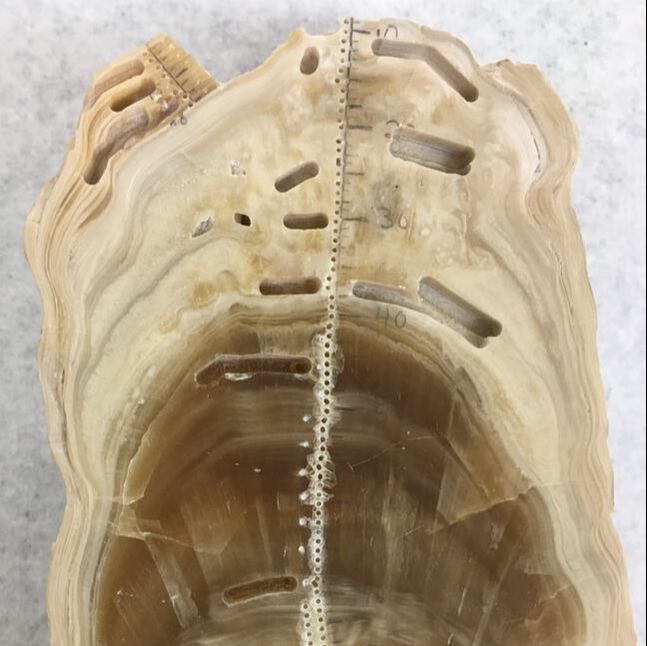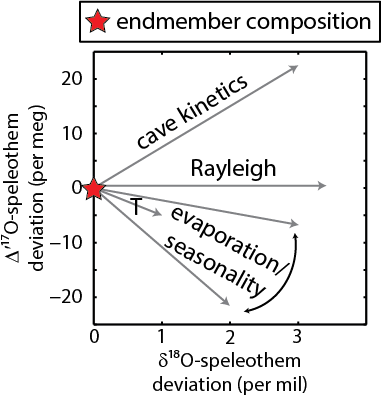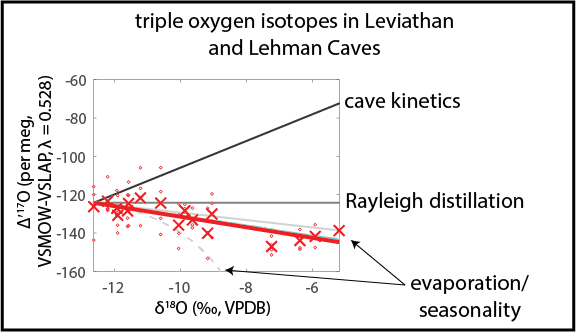|
Cave deposits, also known as speleothems, form as a result of steep chemical gradients that exist in the near-surface. When rainwater hits the ground and begins to infiltrate, it goes from a low CO2 environment (the atmosphere is ~400 ppm) to a high CO2 environment (1000s ppm) caused by biological respiration. This increases the water’s acidity and causes soil minerals to dissolve. However, as the mineral-rich water infiltrates into the cave environment, it encounters a lower CO2 environment as caves can exchange air with the atmosphere – cave air CO2 can even approach atmospheric levels. This forces CO2 to rapidly degas as it drips onto the cave floor and ultimately makes mineral deposits like stalagmites. Speleothems have proved a useful archive for reconstructing ancient environments of the Earth's recent past because they carry a "memory" of the original formation water in their oxygen isotope composition. Traditionally, oxygen isotope composition has been measured as the relative abundance of the 18O and 16O isotopes (i.e., 18O/16O, which is reported in "δ" notation as δ18O). Because the isotopes have different masses, they behave slightly different in chemical reactions. As a result, a sample's δ18O is responsive to regional climate processes like the conditions at the original oceanic moisture source, amount of rainout, rainfall seasonality, and temperature. Local evaporation and “cave kinetic” processes (e.g., the rate of degassing, prior calcite precipitation above the cave) can also influence δ18O. |
|
Here’s an example of how it works in real samples. The data show below are from two Nevada stalagmites – Lehman and Leviathan Caves. The two samples have qualitatively similar δ18O patterns, which is expected given that they should both experience about the same climate. However, the absolute values are different. The Lehman Caves data are a highly exaggerated version of the Leviathan Cave data, suggesting it has been affected by local processes like variable cave kinetic effects, evaporation, or infiltration seasonality. The Δ′17O data are able to give us greater insight into which of these effects is most important. On the right, you can see that the combined dataset falls between the local evaporation and infiltration seasonality lines, suggesting that some combination of these is likely to have affected the Lehman Caves sample. |



